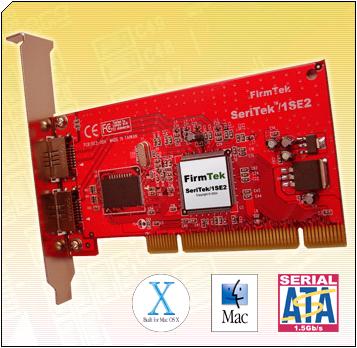
What is eSata?
first, eSata stand for External Serial ATA Interface. Serial ATA is a commonly used interface for internal Hard Drives, and eSATA is an extension of that specification to be used with external devices.
If you’re using a USB or Firewire external drive, what you’re really using is a ATA or Serial ATA hard drive, and an external enclosure. The enclosure has a controller in it which translates the ATA or SATA protocol to USB or Firewire.
This translation causes some delay and there is also some overhead involved in the translations.
eSATA is already in the format that the drive is transmitting. No translation necessary means no lag.
What are the differences of eSATA connectors versus SATA internal connectors?
1. The External connector has no “L” shaped key.

2. The guide features have been changed to prevent the use of unshielded SATA internal cables in external applications and assist the alignment with the mating connector.
3. The insertion depth is increased from 5mm to 6.6mm to provide a more robust interconnect.
4. Full shielding to reduce EMI to provide an ESD path.
5. The contacts are recessed in both the receptacle and plug to prevent ESD damage.
6. Increased durability to 2500 cycles. amount others things.

Here is a list of additions to the SATA specification to support external eSATA:
Sender voltage level increased from 400-600 mV to 500-600 mV to compensate for losses and support longer cables;
Recipient voltage span decreased from 325-600 mV to 240-600 mV to compensate for losses;
Double SATA cable length from 1 to 2 m;
EM shielding of eSATA connectors by means of a small metal cage;
Lock mechanism for eSATA connectors.
Meanwhile, eSATA and SATA connectors are not interchangeable, so you cannot plug a SATA drive to an external eSATA port.

3 reason Why Would you want to use eSATA:
Reason #1 - The transfer rate is fast. I mean really fast. Currently there is a 1.5 Gbps and a 3 Gbps Standard. This blows FireWire (IEEE 1394) and USB 2.0 out of the water.
Reason #2 - Less Lag. Since the data is already in a native format, there is no translation involved. This means data gets to the interface faster.
Reason #3 - It isn’t terribly expensive. Maybe this isn’t a reason to use it, but it isn’t much of a road block either. If your motherboard has SATA connectors laying around, you can extend them with a $3 bracket. SATA expansion cards can be found right now for under $30.

What are the differences of eSATA cables versus SATA internal cables?
1. Fully-shielded cable with separation of the outer shielding (for chassis ground) and
signal ground.
2. Hot-plugging supported.
3. Maximum length increased to 2 meters.
4. The external cable electrical parameter requirements are different from internal (xx)
requirements as shown below:
A. Maximum insertion loss (10-4500MHz) 8db (6dB)
B. Maximum rise time (35ps input) 150ps (85ps)
C. Maximum intra-pair skew 20ps (10ps)
Considerations for connector selection:
There are 4 basic types of connectors.
1. Right angle surface mount
2. Right angle surface mount with reverse pinout
3. Vertical surface mount
4. Vertical through hole
For more info on Serial ATA click in the link below;
Serial ATA
Don't forget to subscribe to my blog!


No comments:
Post a Comment